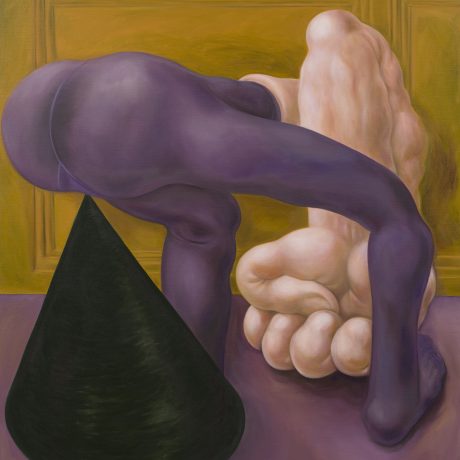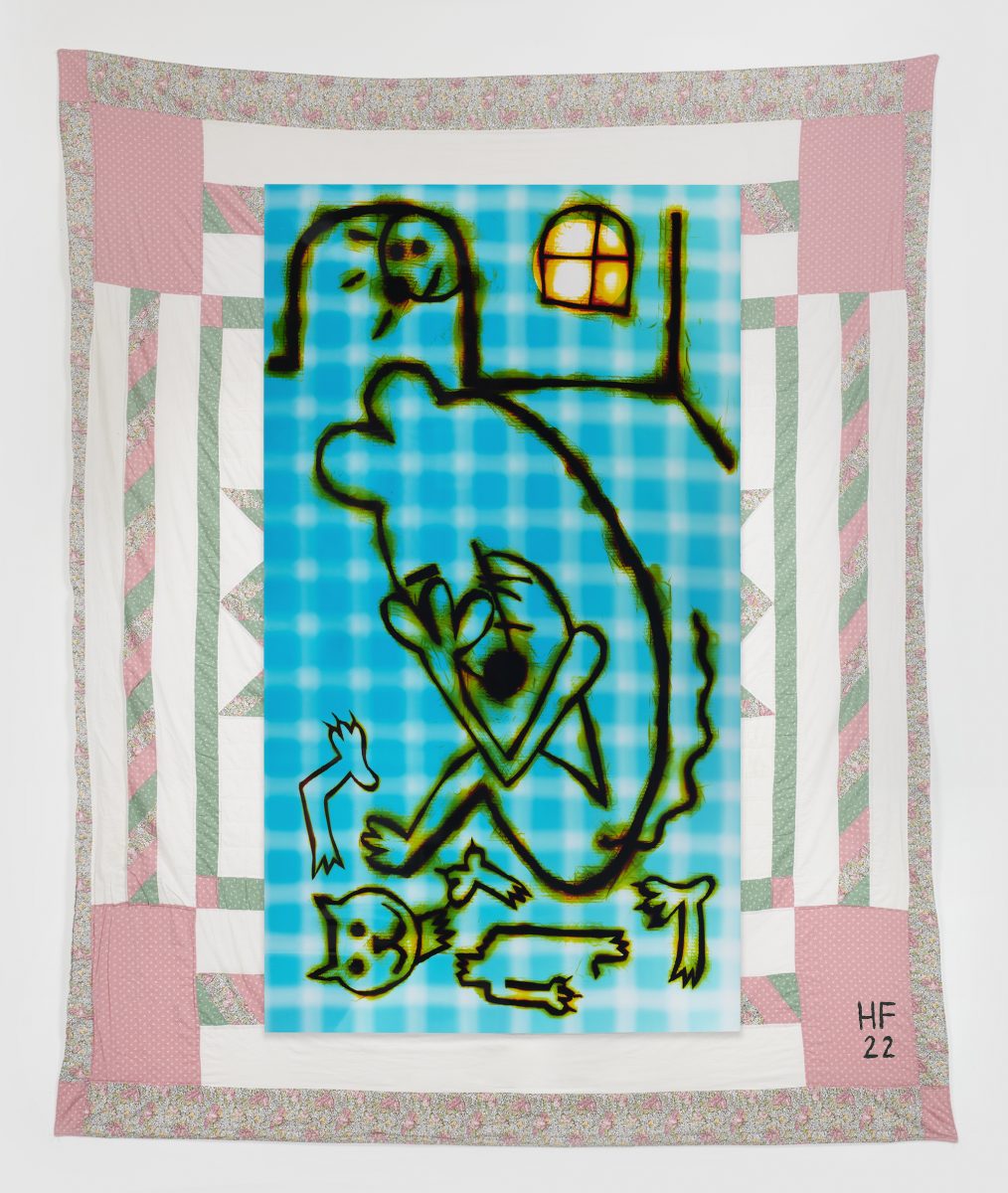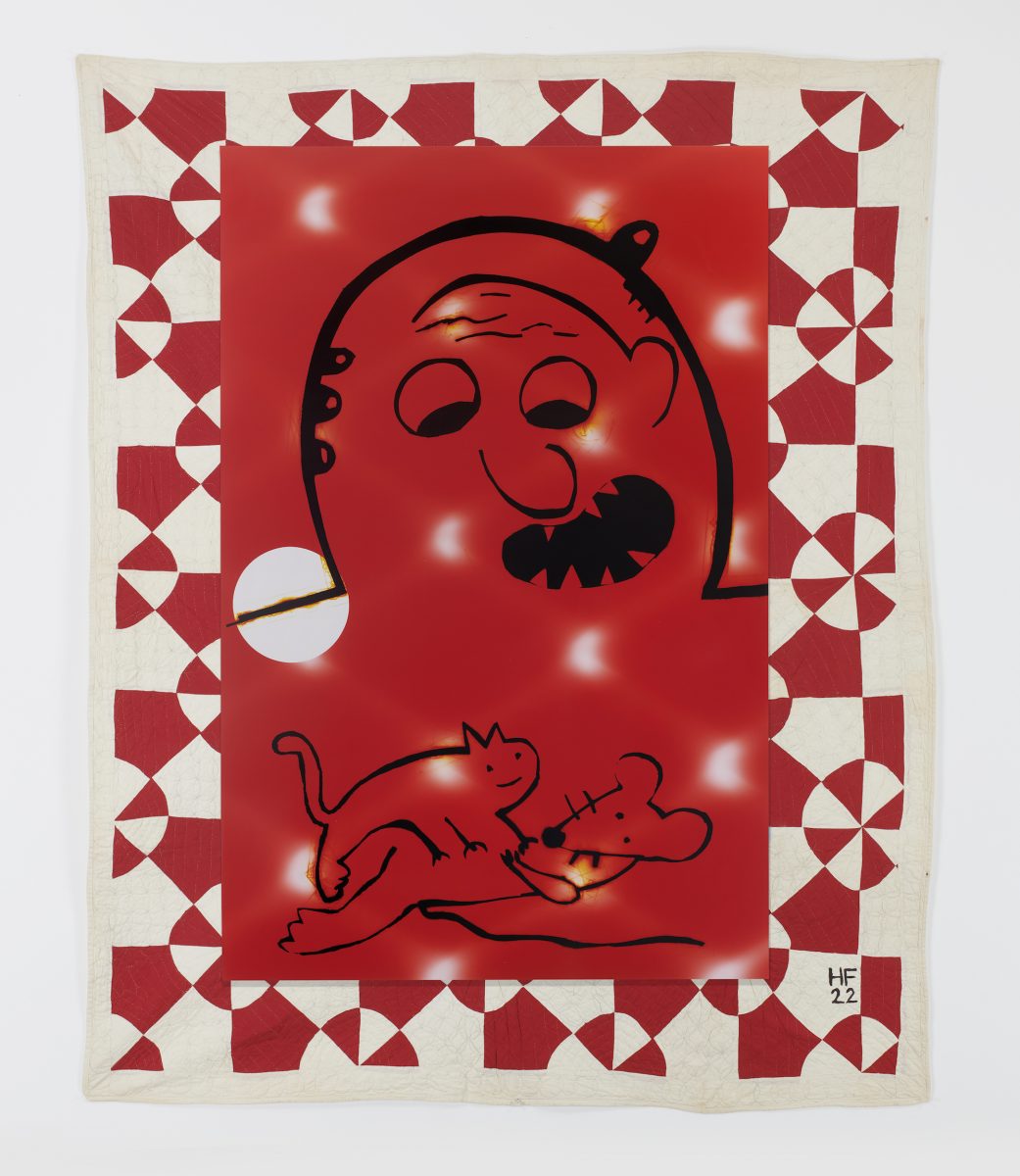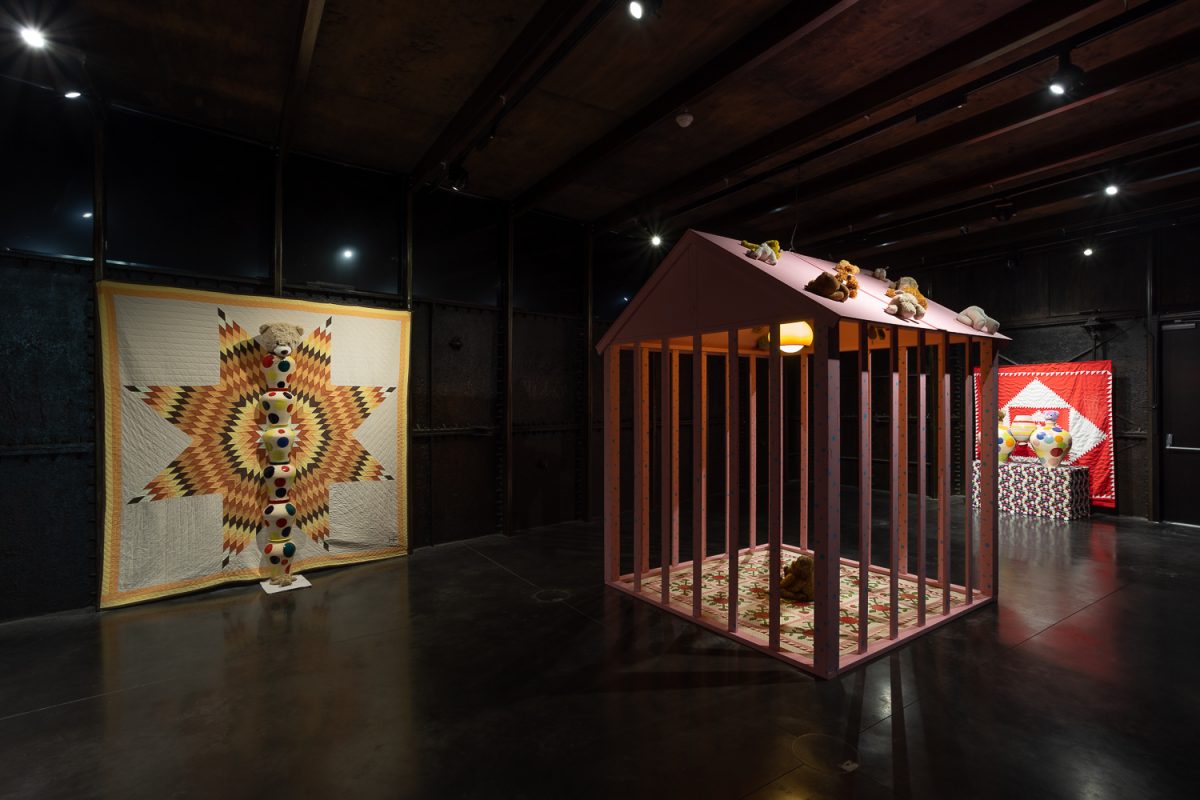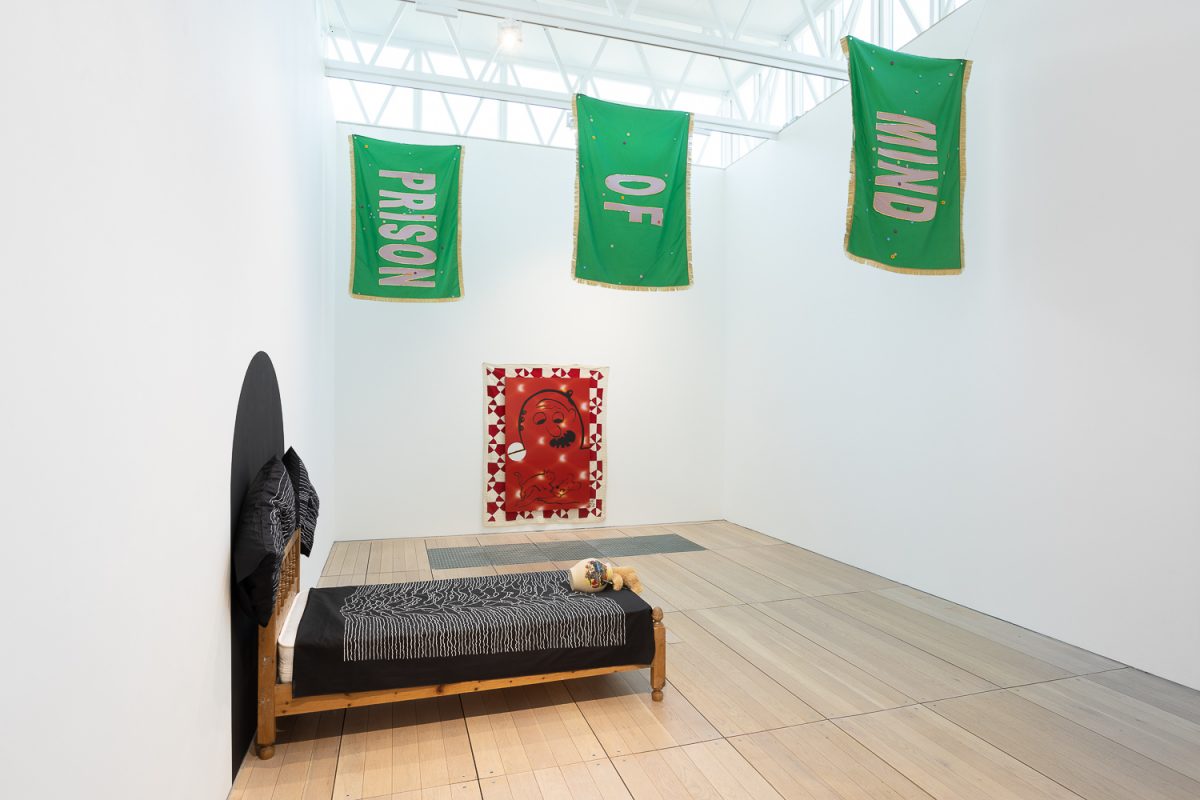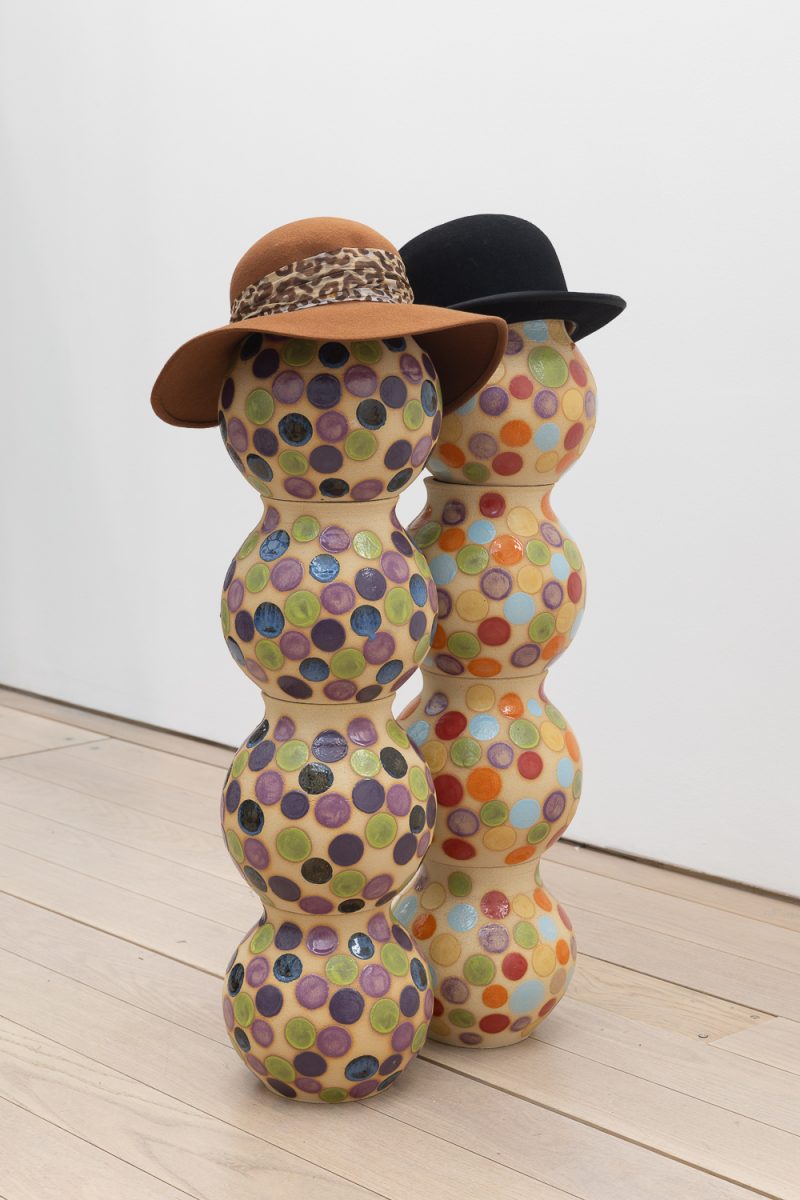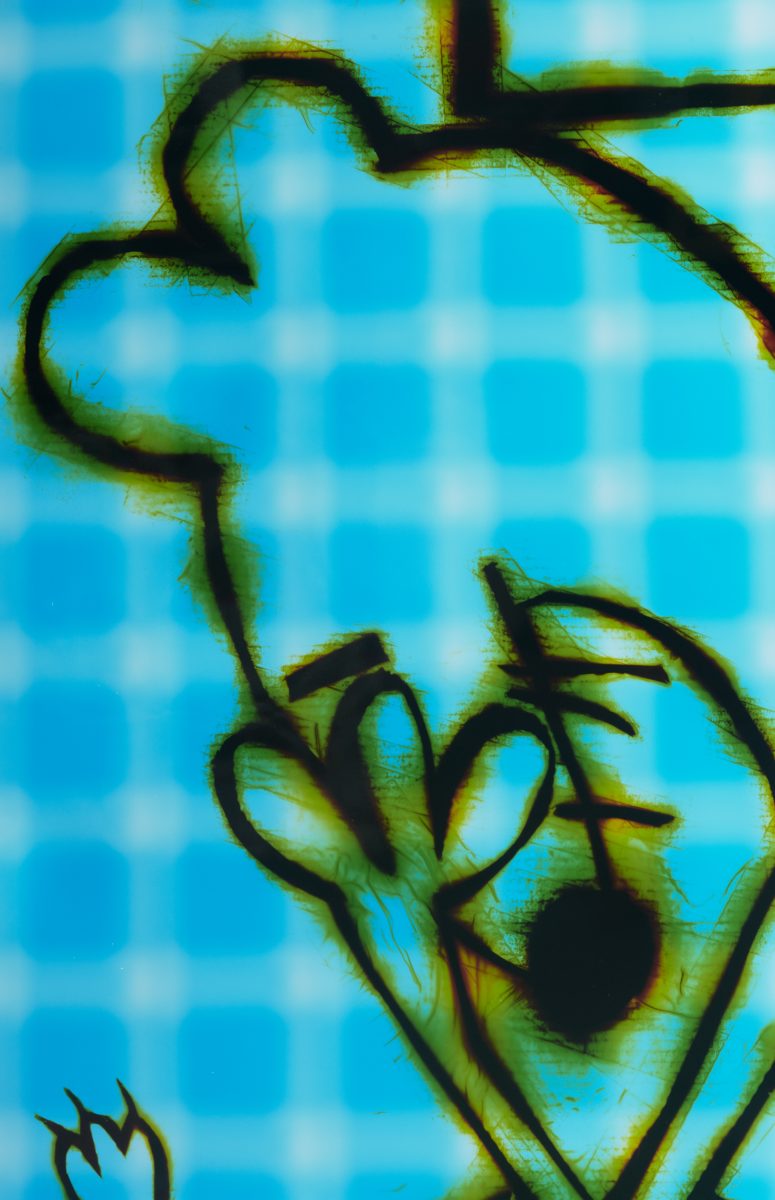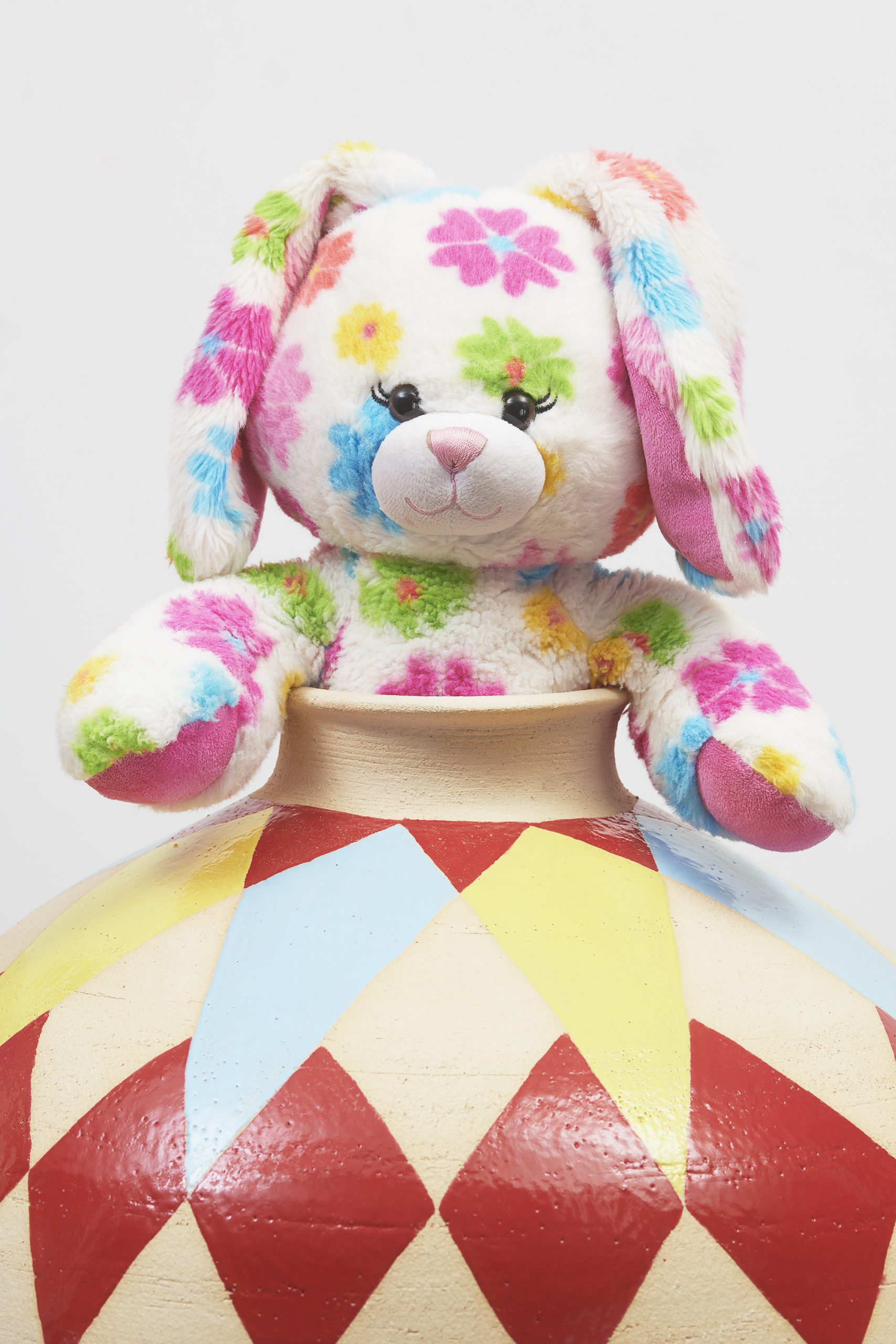
The fluffy teddy bears and cartoonish animals that populate the fictional worlds created by Hadi Fallahpisheh could be called cute, with their button noses and exaggerated ears. But there is something unsettlingly wrong about them, from the eerie suburban houses and picket fences to the security bars that demarcate opaque boundaries that are otherwise left unseen.
In this environment of privatised space and policed borders, Fallahpisheh’s children’s toys take on a newly sinister undertone. Are they restricted by the architectural prisons that they find themselves in, or by the traditional roles that they must play?
Fallahpisheh is an artist familiar with navigating borders both visible and invisible. Born in Tehran, he moved to New York to pursue his studies in photography at Bard College at the age of 25. The fundamental principles of photography continue to directly inform his unusual working methods, in which Fallahpisheh ‘paints’ upon photosensitive paper in the darkroom using a flashlight.
The resulting images are exposed directly upon the surface in the pitch darkness, producing instinctual images created blindly by the artist, guided by his confined sense of space. They hover eerily between light and dark, revelation and concealment, and upend easy assumptions about how and why we categorise the millions of images that we encounter each day.
- Courtesy Rodeo, London / Piraeus
If you could save just one item from your studio, what would it be?
In an emergency, it would be either my phone or a very old ceramic vase from 2,500 BC. My great grandfather was involved with some historical excavations outside Tehran. I grew up being obsessed with this. Years later, I managed to find one of the objects that he had excavated in the early 20th century. It has vanishing patterns on it and it’s in my studio.
“I’m interested in making use of alternative materials and reconsidering what those could be in my work as an artist”
What was the last art material that you bought to use in your work?
It was for my show at Goldsmiths CCA. While I was in London for the exhibition, I managed to track down a hundred-year-old stuffed animal from a dealer in old memorabilia and crafts. It’s a very small bear, and time has taken a toll on him. When I’m making work at home in New York, I usually go to thrift shops and auction houses. Conceptually, I’m interested in making use of alternative materials and reconsidering what those could be in my work as an artist.
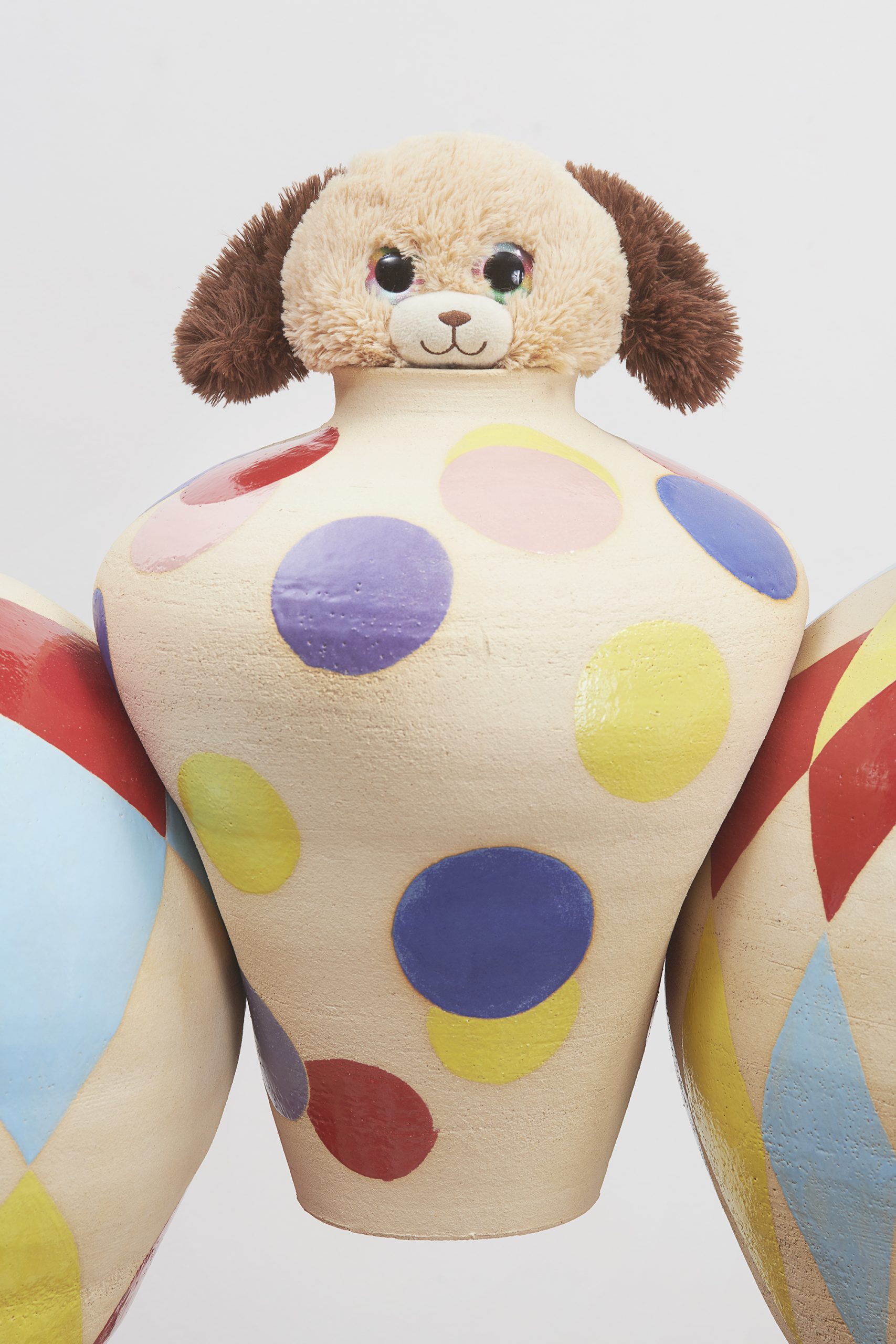
Courtesy Rodeo, London / Piraeus
What is your go to song when you’re working in the studio?
In the darkroom, which is where I spend about half of my time, I purposefully do not listen to music. Nothing from outside comes in . My body, the paper or other objects that I’m moving around make the only sound. But when I’m in the studio, I switch between Franz Schubert and TikTok music. Right now it’s I Got Summer on My Mind by Elli Eli and Raritto San. It’s very cheesy and it balances out the Schubert.
Which single work of art would you choose to live alongside in your home?
A cave painting. And if I could have a cave painting in my house, I would do my best to make a cave in the house for it too.
- Installation view: Hadi Fallahpisheh: As Free As Birds (13 Aug–18 Sep 2022) at Goldsmiths Centre for Contemporary Art. Courtesy Goldsmiths CCA. Photo: Rob Harris.
What are your top art or photography books?
Uncanny by Mike Kelley is a very image-based book and doesn’t have much text in it. He also has a book called Foul Perfection. These two are really amazing books which I often go to. Another two that have been very influential in what I’m doing today are Dear Painter, Paint Me by Alison Gingeras, and Double Bind by Leigh Ledare, which accompanied her exhibition that I had the chance to see. It’s very special and I’m really in love with it.
If money was no object, what would you most like to experiment with in your work?
I would use dirt from the moon or from Mars to make some pots. I would like to see how they hold up in the firing.
- Installation view: Hadi Fallahpisheh: As Free As Birds (13 Aug–18 Sep 2022) at Goldsmiths Centre for Contemporary Art. Courtesy Goldsmiths CCA. Photo: Rob Harris.
Tell us a pet peeve of yours when it comes to the art world.
What’s really scary to me right now is how art is being received as a form of entertainment. I think the mixture of the art world with the entertainment industry is quite scary. Entertainment is produced to be consumed and doesn’t necessarily have that kick to change the mind of the viewer. It’s just about making them happy enough to consume it.
I think art has the power to make someone think twice and hold onto new ideas, but it often takes an easy route and just offers something that’s easy to consume and then forget. It’s castrated and it doesn’t have any force in it. Art is becoming a sort of entertainment.
“It’s castrated and it doesn’t have any force in it. Art is becoming a sort of entertainment”
What is your favourite gallery or museum space around the world?
I haven’t visited that many countries. It was my first time in the UK last year, and I was just in Germany for the first time. I grew up in Iran and I was 25 before I moved to the States. I love the Met Museum so much and I usually go there at least twice a month.
But when I was in Germany, a friend recommended that I travel to Mönchengladbach to visit the Abteiberg Museum. I only planned to stay for around 30 minutes, but I ended up there for three or four hours. I couldn’t leave! It was quite a shocking experience to find myself in this amazing museum in such a small town. They had a wonderful collection of artworks within very strange architecture. I found it captivating.
Louise Benson is Elephant’s Deputy Editor
Hadi Fallahpisheh: As Free As Birds is at Goldsmiths CCA until 18 September 2022
Listen to all the go-to songs picked by our 5 Minutes With artists here
